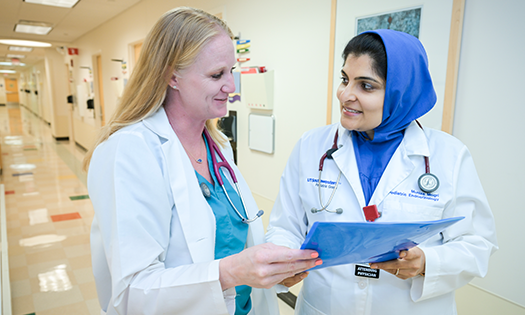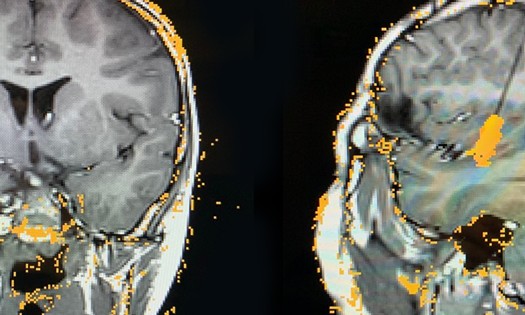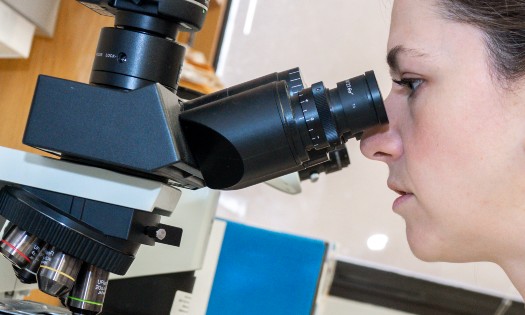Starting rehabilitation as soon as possible helps children regain function after serious injury, surgery or chronic pain. But too often they struggle with exercises because they are difficult, painful and unengaging.
In May 2024, Children's Medical Center Dallas, part of Children's Health℠, introduced a device called MARS – Monitored Augmented Rehabilitation System – that immerses patients in action-adventure video games and breaks up the tediousness of rehab sessions. Children’s Health physical therapists are now using MARS for patients with a range of conditions to help them build strength and stamina.
“MARS distracts children so they're not worried about the work or the pain. They're just doing what they should be doing as kids, which is playing,” says Sarah Elizabeth Rebstock, M.D., MARS Founder/ Pediatric Anesthesiologist and Rehabilitative Pain Physician at Children’s Health and Associate Professor at UT Southwestern.
New modality: Mission to develop MARS
During her fellowship at Children’s Hospital of Philadelphia in the early 2000s, Dr. Rebstock observed that patients with chronic pain conditions became stressed during their rehab sessions because they knew every movement might hurt.
“I wondered if multisensory therapy, which engages all senses, could help break the connection between touch and movement and pain,” Dr. Rebstock recalls. However, developing such a system could take a lot of time and money.
Shortly after finishing her training, Dr. Rebstock licensed technology from Microsoft to adapt the Xbox Kinect gaming system for pediatric rehabilitation, with help from her partners at Interface Media Group (IMG).
In May 2024, patients at the Children’s Health Specialty Center Cityville began using MARS. They stand in front of a TV screen attached to the device. A camera and depth sensor in the device tracks a child’s movements and projects an avatar of them on the screen. As they play games similar to Angry Birds, they see themselves walking, reaching for rings and other actions. Children who are in wheelchairs see themselves as a seated avatar.
Why it matters: Improving stamina and data collection
Although initially developed for children with pain conditions, MARS is now helping patients in rehabilitation after injury, illness or surgery. Children with cardiac conditions and otherwise healthy children who need strengthening are now also using this tool.
“I originally just wanted a fancy video game that we could combine with therapy for kids with chronic pain to distract them and facilitate them doing more activity during therapy. I soon realized that obtaining data from patients doing rehabilitation was extremely valuable and could change how we monitor and plan rehabilitation. So, now it has morphed into a rehabilitation device for all children,” Dr. Rebstock says.
Since implementing the tool, Dr. Rebstock and her colleagues have observed striking improvements in stamina among patients using MARS. They are currently working to publish their first case study of a patient using the MARS device. The research will include data on range of motion, quality of motion and heart rate variability.
The case study is of a 12-year-old patient who experienced a blood clot that left her unable to stand on her own for more than 45 seconds. The first time she used MARS, she was able to stand for 90 seconds, which is the duration of the video game. In subsequent sessions with MARS, she was able to stand in different positions with weights.
What sets MARS apart from other video gaming systems used in pediatric rehab is that it gets the whole body moving, says Samuel Lauman, Ph.D., LAT, ATC, a Children’s Health Movement Scientist who joined MARS R&D team. “If you play Wii, you could sit down and just flick your wrists, and get the same effect. MARS tells kids, “Hey, you need to move to achieve this,’” he adds.
Another difference is the built-in functionality that helps clinicians measure and document a patient's range of motion and progress. Typically, range of motion is measured with a protractor-like device called a goniometer while the patient is laying down. MARS’s built-in detectors enable data gathering more frequently and in the context of realistic movement and exercise.
Next steps: Pushing MARS to new frontiers
The team hopes that MARS will eventually allow clinicians to determine how much they can ask of patients during therapy. Currently, they rely on patient feedback to know whether to increase the intensity of exercises. But patients who are unmotivated or uncomfortable sometimes exaggerate the difficulty.
Since heart rate variability is currently used to assess adult patients' ability to tolerate the stress of exercise, the MARS team recently added this function to their system. Patients attach a strap to their chest so their heart rate can be monitored throughout their session. Dr. Rebstock and her colleagues hope to open clinical trials to determine if this objective measure is an effective gauge for pediatric patients.
Ultimately, the team wants families to be able to take MARS home with them. “A child can play a video game in the living room after school while their parents make dinner, and we could track their progress remotely,” says Stephen J. Kimatian, M.D., Chief Anesthesiologist at Children’s Health and Professor at UT Southwestern.
Rehabilitation at Children’s Health: Always striving for better clinical care
We take a team approach to improving patient care. Our anesthesiologists are making important contributions – often using their technological expertise – to minimize patient pain and maximize patient engagement during rehabilitation and physical therapy.
MARS is a great example of how technology can help achieve both those goals. “What started as a small idea has now become an important player,” says Dr. Rebstock. “That’s just how innovation works.”



